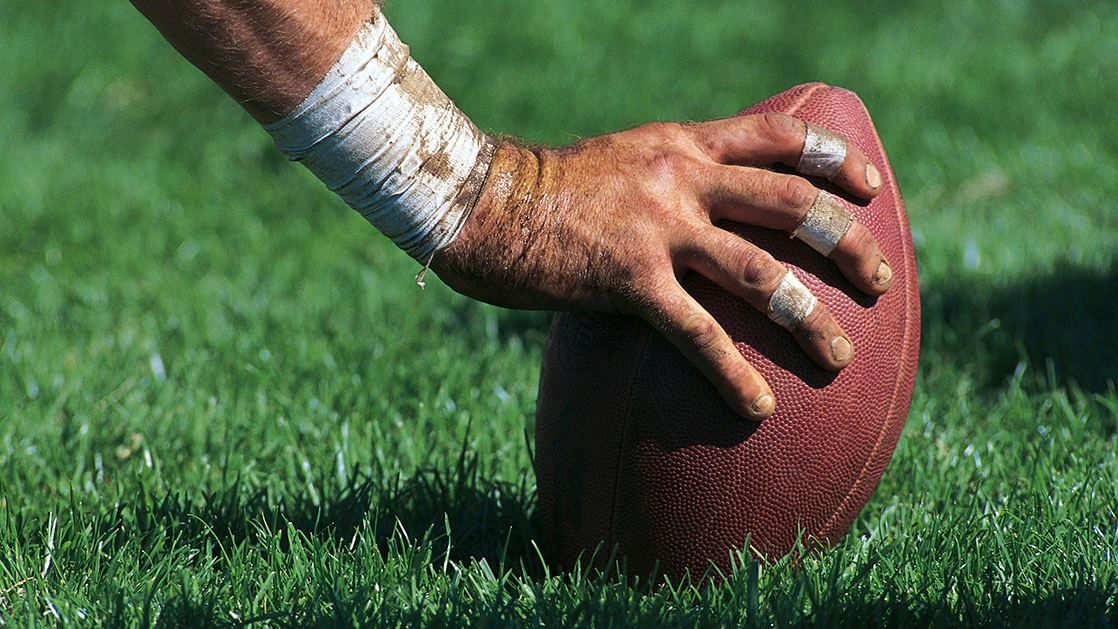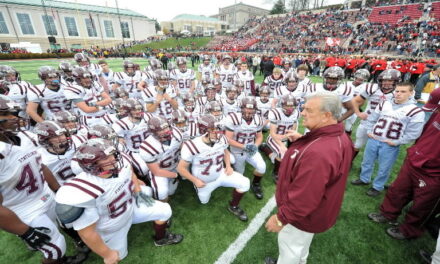You can’t open a newspaper or watch the news without hearing some type of negative scrutiny about football. For the most part the discussion has been on concussions, but has sometimes stretched beyond that with media critics questioning the very values and foundation the sport was built upon. There is a media frenzy on the issue, and as a result we’ve seen a number of good and bad things happen recently — from the youth through professional level. We have seen commendable things like referees being more attentive to spearing, specific medical guidelines issued on how coaches should handle potential concussions on the field, and we’ve seen many safe tackling programs sprout up around the country, most notably USA Football’s “Heads-Up Tackling”. These are good things for the sport.
Football advocates are not looking to minimize the risk of injury or concussion. It happens. Safety matters — every respectable person in football is in agreement on that. However, on the negative side, has football been singled out and put on the spot? Now more than ever, many parents won’t touch youth football with a 10 foot pole because of the bits and pieces of coverage they obtain from the media. Much of this coverage is dramatized, and one sided — just a snippet of the whole picture, and often pertains to the sport at the professional level. There are studies that have found other sports to have equal or more potential for concussions, however the microscope remains on football. Is this a sign of the times where technology has brought us closer to the NFL sidelines and people across America are seeing the physicality of the sport close up and personal and it is making some uncomfortable? Is it the heavy exposure brought into living rooms across America where we can witness 300lb men running at the speed of light colliding in front of our eyes and once in a while going off the field on a stretcher? Is it due to an ever growing liberal society with “helicopter parents”, cupcakes banned in school, and kids allowed to to opt-out of everything from the pledge-of-allegiance to what tests they want to take? Whatever the answer, this is not the first time an attack has been waged on football, and it will not be the last. The beauty of this great sport is that although it has changed slightly over the decades; it remains, and will stand the test of time. Football is America’s passion.
This is the 2nd major attack that has been waged on football. In the beginning, there was only the run and the kick. This was before the forward pass was introduced. The earliest surviving film on this was from 1903 shot by Thomas Edison at the University of Chicago vs. Michigan.
There wasn’t a whole lot of options to move the ball, and every play looked like a goal line stand. Players fought nastily in the trenches banging into each other with tremendous physicality and violence. Football wasn’t just dull at the time, it was deadly. At the dawn of the 20th century most people wanted to abolish it. Football had this enormous problem of violence, brutality, and sometimes death. A single death for any reason can rattle a community, but 18? In 1905 football had its most fateful season ever. 18 people died. This was a horrible statistic because when you consider the low number playing at the time, that 18 was a huge number. There was no pro football back then, but there was big time college football. College administrations became fed up, and decided something had to be done. There was this overwhelming idea about football that it was a barbarous relic from an earlier day. There was a growing social political movement that wanted to abolish it. Columbia University and Northwestern eliminated it, while other schools switched to rugby.
The prohibition movement wanted to do away with it, and they thought they would finally get their way. But President Theodore Roosevelt wouldn’t stand for it. “Of all games I like football best, and would rather see my boys play it than see them play any other. I have no patience for those who declaim against it because it necessitates rough play and occasional injury”, said Roosevelt.”It is a good thing, to have the personal contact about which the New York Evening Post snarls so much”, he said. Roosevelt felt that football had a strong connection to the American way. He campaigned heavily for football reform so that the game could survive. He advocated for the forward pass pitching two men who were involved in the rule-making of football; Walter Camp, and Paul Dashiell.
There was much opposition initially to forward pass. Roosevelt and a few others felt that the forward pass would take away some of the brutality of the game without softening it into another sport all-together. In 1906 the forward pass was legalized. It’s evolution was long and complicated, but ultimately Roosevelt was right. Not only did the forward pass ease the deadliness of the game, it created an exciting new element that many coaches and players would leverage in later years. The position now known as wide receiver was established and football eventually turned into the sport we now know.
Will Football survive this second attack? Absolutely. Why? Because it embodies the qualities that America was built upon, and it allows us to exercise them in a controlled environment. Every gridiron battle incorporates leveraging intelligence, strength, and brotherhood against adversity; in an ultimate quest for victory. Lessons are learned in the victories and in the losses. Will football change? Maybe, but it will never die. Changes to increase safety and protect lives are good, especially at the youth level. Up until this day in time the handful of changes to football over the years have made the game safer without sacrificing it’s integrity or popularity. The most important safety feature we now have – helmets – became required in 1939 by the NCAA, and 1943 by the NFL. Are there more changes to come?
What can you do to help preserve football? Support appropriate safety measures that protect players, educate yourself and others on safe-technique and demand the same from your coaches and league, join an organization that promotes all of the above as well as grassroots events like jamboree’s, pig roasts, BBQ’s, movie nights, camps, clinics, field trips and more. All of these events bring together coaches, parents, players and build support in the community. If there is not an organization like this in your area, think about starting one. Community support and camaraderie are essential. It’s no secret that in Long Island, NY, Football takes a back seat to Lacrosse, Soccer, and some other sports. Where then do passionate young football players look for growth and opportunity? Where do they look for guidance? In the South and West youth football opportunities are endless, and as a result there are numerous youth football powers and a long list of Division I commitments. How then can Long Island compete?
LIYFA is a non-partisan group of the most passionate Leaders, Coaches, Parents, and Players in Long Island Youth Football. These are people who Live, Eat, Sleep, and Breathe FOOTBALL, who have joined together to raise the level of exposure for the region. The sole mission is to raise the level of play, raise the level of exposure, and provide more opportunities for Long Island players who think this is the greatest game on earth.
In the past 2 years exposure for Long Island football players, teams, leagues & coaches has increased as a result of LIYFA efforts. More NCAA and NFL players have gotten involved with local youth programs on Long Island in the past two years then in the previous 5 years combined! Travel select teams have been born, the number of camps, clinics, and combines has increased, and the gap between youth and high school is being bridged. People in Long Island are becoming excited again about football! #JoinTheLiyfaMovement
JOIN THE MOVEMENT TO ELEVATE LI YOUTH FOOTBALL!






Recent Comments